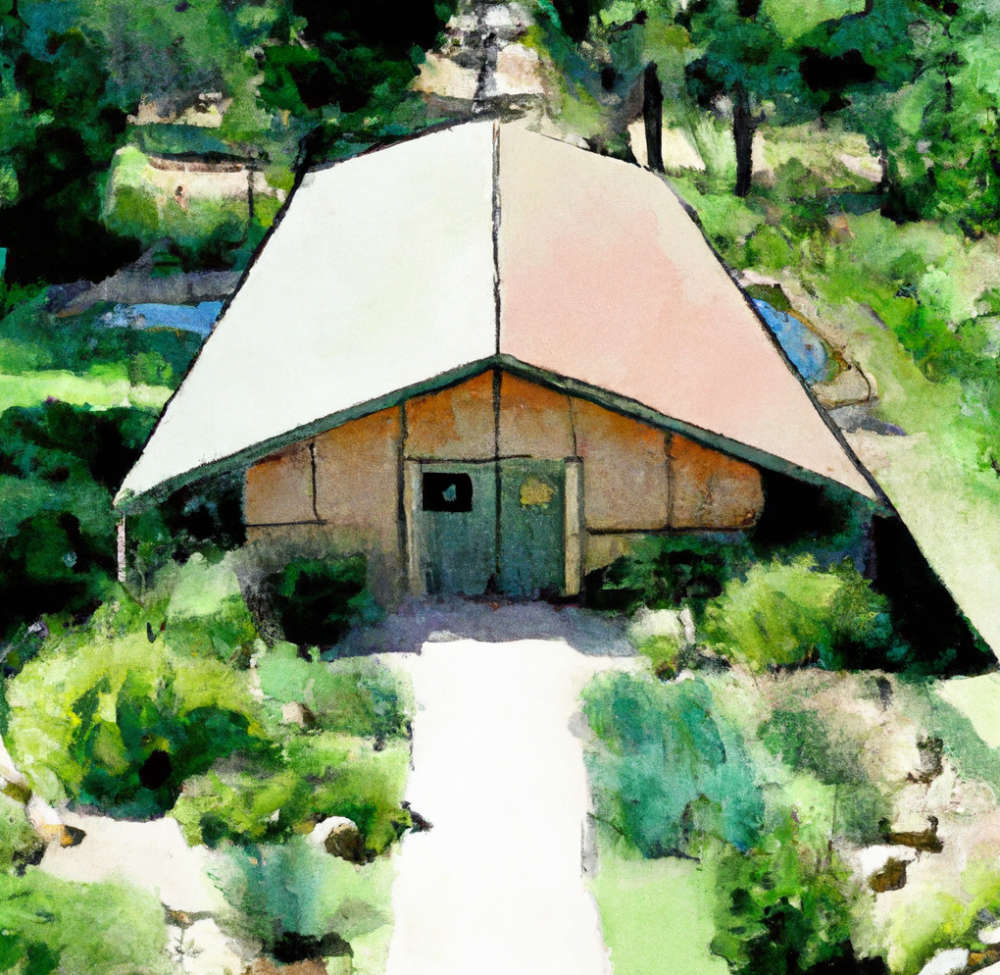- Sustainable Living: Designing and Navigating a Homesteader’s Journey
- Homestead Architecture: Embracing a Sustainable Future
Homestead Architecture, with its transformative power, shapes a resilient future as we embrace homesteading and sustainable living.
We are living in a time of big changes worldwide, where one country being the most powerful is no longer the case. Instead, many nations have significant influence. This shift means we are at a crucial moment in history. Sustainable living and the comeback of homesteading are becoming important ideas that can guide us. They offer a way to change our lives for the better, making us stronger and more independent. We have the chance to create a future where we take care of the environment and rely on ourselves. It’s an exciting path that leads to a better and more sustainable future.
Creating Resilient Communities: Embracing Homestead Architecture
In a world where supply chain disruptions and uncertain global dynamics are becoming more prevalent, there is a growing movement of people who seek to build their own homesteads for the right reasons. Homestead architecture offers a practical solution to empower individuals and communities to become self-reliant and resilient.
Imagine a future where communities prioritize building homes and spaces that are sustainable, eco-friendly, and energy-efficient. Homestead architecture promotes the use of renewable energy sources like solar panels and wind turbines to provide clean and reliable power. It also emphasizes responsible water management techniques such as rainwater harvesting and greywater recycling to conserve water resources.
By embracing homestead architecture, individuals and communities can reduce their dependence on external resources and create self-sufficient environments. It’s about taking control of our own lives, building strong connections with nature, and living in harmony with the environment. By prioritizing sustainable design principles and regenerative practices, we can create communities that thrive and endure, even in the face of unpredictable global changes.
Homestead architecture allows us to embrace our grassroots and take charge of our own future. It empowers individuals to build sustainable homes and communities that are not only aesthetically pleasing but also environmentally conscious. By coming together and prioritizing these principles, we can create a world where resilience, self-sufficiency, and harmony with nature are at the forefront. Let’s embrace the transformative power of homestead architecture and shape a future where communities flourish and individuals have the tools to create their own sustainable havens.
Questioning Traditional Economic Models:
In today’s interconnected global economy, we have become more aware of the vulnerabilities and interdependencies that exist. This has made us question the sustainability of traditional economic models. The current system, characterized by wealth inequality and unsustainable consumption, contributes to the decline of the American empire. To adapt to this changing world, we need to seek a more stable supply chain and more sustainable economic models that prioritize the well-being of everyone, closer to home.
The challenges we face extend beyond just geopolitical shifts. Economic disparities and unsustainable practices have had negative effects on societies around the world. It’s crucial for us to reevaluate our economic models and embrace sustainable alternatives. Homestead architecture plays a crucial role in this transition. It promotes efficient use of resources, regenerative practices, and community resilience. By integrating sustainable design principles into our economic systems, we can create a more balanced and sustainable future.
As we navigate the uncertainties of this new era, including economic disparities, resource depletion, social unrest, and shifting power dynamics, we are prompted to reevaluate our values, priorities, and way of life. Sustainable living and homesteading offer a promising solution in this context. Sustainable living encourages self-sufficiency, ecological consciousness, and responsible consumption. Embracing homesteading practices allows individuals and communities to reduce their impact on the environment, build resilient communities, and reconnect with the land. Homestead architecture provides a blueprint for this sustainable lifestyle, incorporating design principles that work in harmony with nature and promote a healthier relationship between humans and the environment.
The Rise of Sustainable Living: Pathway to Resilience and Self-Sufficiency
The rise of sustainable living provides a way for us to build resilience and become more self-sufficient. It involves being mindful of our impact on the environment, making responsible choices about what we consume, and adopting renewable energy sources. Sustainable living also emphasizes the importance of building strong communities. By embracing these principles, peopl can protect the environment, ensure the well-being of their citizens, and foster a thriving economy that is in harmony with nature. It’s about finding a balance that allows us to meet our needs while preserving the planet for future generations.
Discover the beauty of a sustainable food source tailored to your climate and space with Food Forest Abundance.
Embracing Homesteading: A Revival of Ancestral Wisdom
Homesteading, with its rich history and ancestral roots, offers a refreshing alternative to the modern way of life. In a world where people are increasingly disconnected from nature, homesteading encourages a profound reconnection. By practicing organic gardening, individuals can cultivate their own food, nourishing both their bodies and their souls. Permaculture principles guide the design of sustainable systems that maximize resource efficiency and promote ecological harmony. The integration of regenerative agriculture techniques replenishes the soil, ensuring its fertility for future generations. Additionally, the emphasis on building resilient communities fosters a sense of collective support and collaboration, nurturing social well-being and cohesion. Homesteading provides a tangible and inspiring example of how we can lead fulfilling lives while minimizing our impact on the Earth. It ignites a spark of inspiration within us, fueling our desire to make positive changes and create a more sustainable and balanced future.
Homestead Architecture: Building a Sustainable Future by Integrating Sustainability and Functionality
In this era of profound transformation, homestead architecture emerges as a vital element for shaping a sustainable future. It goes beyond mere aesthetics, integrating sustainable design principles, functionality, and resilience. Homestead architecture embraces a holistic approach that harmonizes with nature and prioritizes the well-being of its inhabitants.
When we talk about homestead architecture, we’re not only referring to the design of houses but also to other buildings found on a farm or homestead. These structures, including barns, sheds, workshops, and storage facilities, are carefully planned with sustainability and functionality in mind, supporting a self-sufficient and environmentally conscious way of life.
Just like sustainable homes, these buildings are thoughtfully designed to minimize their environmental impact. They are constructed using eco-friendly materials, incorporating energy-efficient features like insulation and natural lighting. The aim is to create structures that are both comfortable for their intended purposes and considerate of the planet we live on.
Renewable energy systems, such as solar panels and wind turbines, are seamlessly integrated into these buildings. By harnessing the power of the sun and wind, clean and renewable energy is generated, reducing dependence on fossil fuels and lowering the overall carbon footprint of the homestead. These sustainable energy sources enable the farm or homestead to become more self-reliant and independent.
Effective water management is also a crucial aspect of homestead architecture. Rainwater harvesting systems are implemented to collect rainwater for various uses, such as irrigation and animal watering, promoting responsible water usage. Additionally, greywater recycling systems are utilized to treat and reuse water from sinks, showers, and other sources, minimizing water waste and ensuring efficient water resource management across the entire homestead.
Homestead architecture also recognizes the significance of food production. It involves the design and implementation of infrastructure that supports sustainable agriculture, such as permaculture gardens and vertical farming systems. By integrating food production within the community, individuals can have access to fresh and nutritious food while reducing their reliance on external sources.
Furthermore, community spaces play a crucial role in homestead architecture. These thoughtfully designed areas foster interaction, collaboration, and a sense of belonging among residents. Community gardens, playgrounds, and common areas provide spaces where people can come together, share resources, and support one another. These spaces promote social cohesion, well-being, and a strong sense of community.
By incorporating sustainable design principles and regenerative practices into homestead architecture, people can create resilient communities that thrive in this new era. These communities prioritize environmental responsibility and offer a high quality of life for their inhabitants. Homestead architecture offers a blueprint for building a future where communities can flourish while living in harmony with the planet we call home.
The Homestead Architecture Book: A Comprehensive Guide for Sustainable Homesteads:
Our upcoming book, “Homestead Architecture: Building a Sustainable Future,” delves into the world of homestead architecture, exploring the principles, strategies, and practical considerations of designing and constructing sustainable homesteads. Within its pages, readers will find guidance on selecting optimal locations, optimizing energy systems, integrating regenerative practices, and fostering community resilience. This comprehensive guide equips people with valuable insights and practical tools to navigate the challenges of the post-American empire era and build sustainable futures for their citizens.
Conclusion: Shaping a Resilient Future
In conclusion, as we find ourselves amid a rapidly changing world, it is crucial to recognize the transformative potential of sustainable living and homesteading. These guiding principles provide us with a roadmap to create a future that is resilient, equitable, and environmentally conscious. By embracing homestead architecture and sustainable practices, we empower ourselves to make a positive impact on both a personal and global scale.
Through the integration of sustainable design, renewable energy systems, and regenerative practices, homestead architecture serves as a catalyst for change. It encourages us to rethink our relationship with the environment, fostering a deep respect for nature and its finite resources. By prioritizing sustainability in our homes, communities, and everyday choices, we can build a more harmonious future where people, the planet, and all living beings thrive.
As an architect and advocate for sustainable living, I am inspired by the potential that lies within each individual to contribute to this transformative journey. By embracing sustainable practices and homesteading principles, we have the power to shape a future where people coexist in harmony, where equality of opportunity prevails, and where our planet is preserved for future generations.
Let us embark on this journey together, drawing inspiration from the wisdom of our ancestors and the possibilities of modern innovation. By building resilient communities and nurturing sustainable lifestyles, we can create a world where human potential flourishes, where nature thrives, and where the bond between people and the planet is unbreakable.
“Remember, in every design decision, we hold the power to shape our future. Let’s embrace sustainable living, for it is through our independent but collective actions that we will create a resilient and thriving world.” – James Kane
 Copyright secured by Digiprove
Copyright secured by Digiprove 



